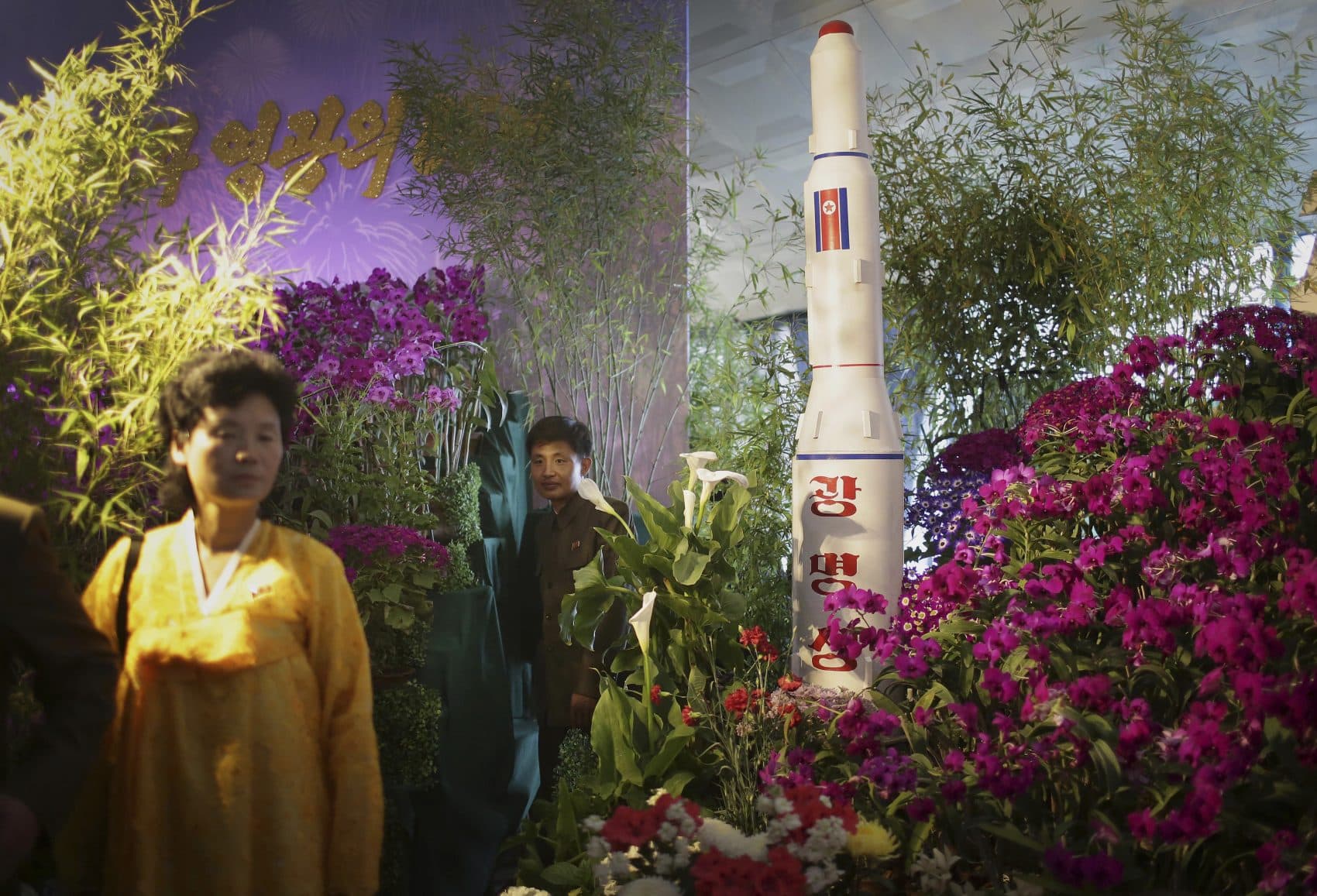Advertisement
COMMENTARY
Trump Meets His Macho Match In North Korea's Leader

Donald Trump’s threats toward North Korea seem to have scared everyone except that country’s leader Kim Jong Un. Now Kim’s government is promising “more missile tests on a weekly, monthly and yearly basis.” In other words, the country is more determined than ever to develop its nuclear program.
Meanwhile, America’s allies, South Korea and Japan, urged the U.S. not to take preemptive action fearing they could bear the brunt of North Korea’s retaliation. After Trump tweeted on April 11 and 12 that North Korea was a “menace” “looking for trouble” and that the U.S. would “solve the problem” without China’s help, China called for calm instead of a gathering storm.
Vice President Mike Pence rushed to South Korea and announced "the era of strategic patience is over." On April 15, North Korea did not test its sixth nuclear weapon, as experts feared it might. Instead, it fired off a missile that failed. Did Pence mean that a new era of tactical impatience had begun?
Some have speculated that the missile was damaged by U.S. cyber warfare. If so, this could delay North Korea’s ability to launch a nuclear warhead. But it would only be a delay.
President Trump’s posturing as the irascible and unpredictable leader of the world’s most powerful military is effective only if he can intimidate other bullies.
President Trump’s posturing as the irascible and unpredictable leader of the world’s most powerful military is effective only if he can intimidate other bullies. He may have met his macho match in the Supreme Leader Kim Jong Un.
Sadly, the bully posture merely continues the American might-makes-right pattern that has led regimes to acquire nuclear weapons in the first place.
Nuclear weapons are considered insurance against regime change. America’s invasion of Iraq intensified the fear of American-forced regime change as well as increased the determination of some countries not to be bombed into oblivion. Iran stepped up its efforts at nuclear weapon development after the U.S. toppled Saddam Hussein before reaching an agreement in 2015 never to acquire such a device.
Trump has said that he does not seek regime change in North Korea to calm fears that the U.S. might be trying to depose Kim. But this is unlikely to stop North Korea's leader. No deals negotiated by previous administrations have halted North Korea's weapons escalation in the past 30 years. In fact, Pyongyang’s weekend military parade displayed an impressive array of missiles, including two large transporters carrying canisters for potential intercontinental ballistic missiles that, if they worked, could reach much of the world.
Advertisement
Imagine if Russia had 28,000 troops in Canada, within an hour’s drive of the Maine border ... Imagine if those troops conducted long defensive drills every year with all the Canadian troops.
When the U.S. dropped MOAB onto Islamic State tunnels in Afghanistan, it signaled to North Korea that it had a bomb that could get all the way into its main nuclear site believed to be in the mountains near Yongbyon. The attack on Syria’s airfield provided proof that Trump would act against another country if he felt sufficiently aggrieved.
Yet Kim Jong Un remains defiant. In order to move this stubborn man, we must pay attention to what he fears: threats to his regime. When the U.S. and South Korea conduct their annual air, sea and land training exercises, called Foal Eagle, North Korea bitterly objects and ratchets up the war talk.
It’s easy to see why. Imagine if Russia had 28,000 troops in Canada, within an hour’s drive of the Maine border, as the U.S. has in South Korea. Imagine if those troops conducted long defensive drills every year with all the Canadian troops. The U.S. president might worry the Russians were preparing to invade, similar to Kim's fears about Americans.
To calm Kim, the U.S. might offer to reduce the number of U.S. troops used during these training missions in agreement, of course, with South Korea. The annual drills are part of a 1953 defense treaty.
It would be a first step in showing that South Korea and the U.S. are willing to give up something they see as key to their security. It may encourage North Korea to do the same.
